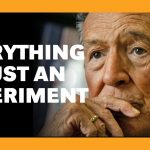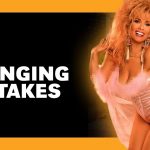Scouting for just the right location is crucial for the success of every television show or film. At times, the thing that audiences remember most is the location where a series or movie was shot. In this video, we’re going to discuss the various sets and shooting locations of the great American Western television series Bonanza. And how these sets were never quite the same after the iconic show ended.
Aside from the marvelous cast of characters, several other important factors made Bonanza one of the most-watched series on TV.
The Western series was extremely popular in the 1960s. Millions of viewers tuned in each week to see what kinds of moral dilemmas and sticky situations the Cartrights. A family ranchers living near Virginia City, Nevada in the mid 19th century, would be getting themselves into.
NBC’s Bonanza notable on a technical level for being the first western broadcast on television in color. It was also the second-longest-running western series on American television, right behind CBS’s Gunsmoke.
It starred prominent actors like Lorne Greene, Pernell Roberts, Michael Landon, and Dan Blocker. While the series’ phenomenal cast certainly was one of it’s primary draws, it’s visual aesthetics were also quite striking. Simply put, Bonanza wouldn’t have the hit show that it became if it not for it’s immensely talented set designers and location scouts.
Keep watching to learn what became of Bonanza’s various shooting locations. And sets in the years following the airing of it’s final episode in January 1973. If you consider yourself a fan of this hugely influential Western series, this is one video you won’t want to miss.
The Original Lake Tahoe Ponderosa Ranch Recently Sold
Between 1959 to 1973, the Cartwright family rode horses with guns blazing across several TV sets featuring backdrops of serene mountainsides and lush pine groves. One of the most famous shooting locations was the famed Ponderosa Ranch. While Bonanza was a fictional show, the ranch itself was not.
The real-world Ponderosa Ranch is this massive 24-acre property in western Nevada. Today, it looks a little different than it did fifty-plus years ago. And just recently, it sold for a jaw-dropping $38 million.
According to Realtor.com, the home’s staggering high selling price makes it the most expensive waterfront property ever to be sold on the Nevada side of beautiful Lake Tahoe. Really though, if you take a look at this sprawling property, it’s worthy of that kind of money.
The home that serves as the centerpiece of the property features 17,700 square-feet of floor space. This home includes 9 bedrooms, 9 fireplaces, a full gym and sauna, a game room, and a home movie theater.
The Ponderosa Ranch listed by Lexi Cerretti of Sierra Sotheby. And attracted the attention of wealthy city-slickers who were no doubt looking for a bit more space and seclusion.
The property has been on and off the market since 2016 and initially listed at $59 million. In addition to the luxurious amenities we already mentioned. The compound also has 378 feet of private beach access and a giant 15-stall horse stable. It also features a wine cellar, two office spaces, a crafts room, and multiple living rooms.
The Iverson Movie Ranch
This shooting location has called one of the most ‘shot-up’ movie and television locations ranch in cinema history. The Iverson Ranch is situated in the picturesque rocky foothills of the majestic Santa Susana Mountains just outside of Chatsworth, California.
Over the years, this location has used to simulate terrain in the Wild West, the South Seas, Africa, Asia, and even alien interstellar landscapes. More than 2,000 films and television shows have filmed at the Iverson Movie Ranch.
With it’s oak trees, sandstone boulders, and three mountain peaks as it’s backdrop. This location is easily one of the most recognizable sites for film and television audiences of all ages.
The history of this ranch began back in 1884 when a man by the name of James R. Williams managed to convince his sister-in-law Agusta Wagman, an immigrant from Sweden. To homestead 160-acres of the rocky countryside just east of the Niels Johnson Ranch in northwest Chatsworth.
Williams planned on acquiring the property from Augusta after the homestead was. As he put it, ‘proved up’, but Augusta ultimately decided she wanted to keep the farm that she had invested so much of her blood, sweat, and tears into.
In 1888, Agusta married a man named Carl Iverson who was himself an immigrant from Norway. In time, the couple and the five children they produced grew their ranch to over 500 acres. Later, the Williams ranch became a part of the notorious Spahn ranch. But we’ll get to that one in a bit, so make sure you keep watching.
Also if you’re enjoying this video so far, take a moment to show us a little support by giving us a like and subscribing to the Facts Verse channel.
Anyway, let’s flash forward to 1912 when the first film, D.W. Griffith’s Man’s Genesis, shot at the ranch under the Iverson family’s supervison. The following year, Cecil B. DeMile shot his 1914 film The Squaw Man there.
By the late 1910s, what would inevitably become a long, fruitful, and enormously profitable relationship between Hollywood and the ranch had established. In the years that would follow, the Iverson ranch would become one of the go-to Western filming locations.
The Lone Ranger, The Gene Autry Show, Tombstone Territory, and Gunsmoke would among some of the best-known westerns to be filmed there. Bonanza, of course, also used the site extensively during it’s later years.
In the mid-1960s, the state of California began construction of the Simi Valley Freeway. It which ended up cutting the ranch in half. The presence of the freeway also produced a lot of noise, making the ranch property significantly less viable of a filming site.
Coupled with the declining popularity of the Western genre in general. The Iverson ranch soon fell out of vogue and eventually ceased to be a sought-after shooting location. The last couple of movies that filmed here Support Your Local Sheriff in 1968 and 1976s Pony Express Rider.
Here in these photos, you’ll see a cabin that ended up appearing in a 1969 episode of Bonanza entitled ‘Meena. This small wooden building one of the last sets. Potentially even the last set – built at the ranch while it still being used as a filming location. In the years that have gone by since then, the ranch has sold off and developed into a residential neighborhood. Today the site of this cabin contains an upscale estate.
In the episode that the cabin featured in, the title character Meena, portrayed by actress Ann Prentiss, prevented by Little Joe from killing the Cartwright’s good friend Candy. In this screengrab, Prentiss is seen holding a gun in front of the cabin.
The Spahn Ranch’s Murderous History
After infamous cult leader and convicted murderer Charles Manson evicted from the Cabin of Beach Boy Dennis Wilson. He and his followers made their way over to a Los Angeles county ranch where they met and befriended it’s owner George Spahn.
Spahn had been the owner of said ranch since 1953 when he purchased it from Lee and Ruth McReynolds, who used it as movie set. But by the time that Manson and his rag-tag band of vagrant flower-power adherents had arrived. Mr. Spahn took a liking to Manson and the two arrived at an agreement where Manson. And the women who saw him as their guru could work the ranch in exchange for being permitted to stay there.
The Manson family relocated to the ranch gradually. They first stayed at a church nearby before squatting in old. Dilapidated shacks along the riding trails in the surrounding area. After moving into the ranch, Manson and his followers used it as their headquarters from 1968 to 1969.
In 1969, Manson convinced his followers Susan Atkins, Patricia Krenwinkle, and Leslie Van Houten to murder actress Sharon Tate and six others. The killings rocked the nation and resulted in the arrests and subsequent convictions of Manson and his murderous minions.
During the years that the Spahn ranch used as a shooting location for Western films and television shows, offerings like The Lone Ranger, Duel in the Sun, The Creeping Terror, and Bonanza filmed there. It was mainly used as a spillover filming location when the Iverson ranch already in use.
Bonanza’s Other Shooting Locations
Big Sky Ranch in Simi Valley has used for the filming of countless Westerns, including Rawhide, Little House on the Prairie, Jericho, and Bonanza. In 2003, a fire destroyed the majority of the remaining sets, including a farm house that featured on Gunsmoke, Little House on the Prairie, and Bonanza.
As of 2011, the ranch still listed as a filming location on the property’s website. Recent productions to film here include The Office, Django Unchained, and Agents of Shield.
Red Hills Ranch in Sonora, California, also a location often used during the filming of Bonanza. Other shows and films shot here include Little House on the Prairie, The Adventures of Briscoe, and Back to the Future Part III.
Bonanza likewise filmed numerous scenes at the Bell Moving Picture Ranch in Simi Hills.
Lorne Greene Built A Bonanza Replica Set
Lorne Greene loved Bonanza so much that in 1963 he built a house on a property in Mesa, Arizona, that modeled after the Ponderosa ranch featured in the show. The Ponderosa II, as he dubbed it, is now on the market for $849,000.
Besides the shooting location in Lake Tahoe, many of the scenes filmed to bring to life the original Ponderosa in Bonanza actually acquired at a Paramount Studios lot in Hollywood.
So, after doing a bit of digging we’ve discovered that Bonanza actually filmed at a number of different locations all across the American southwest and California.
Did you know that one of those locations, Spahn Ranch, was the site where Charles Manson and his followers called home in the late 60s. And were you aware that Lorne Greene recreated the Ponderosa on a piece of property she owned in Arizona? Let us know in the comments.
Before you go, take a moment to show us a little love by giving this video a like and by subscribing to the Facts Verse channel. While you’re at it, tap the bell to turn on notifications. That way, you can keep up with all of our latest and upcoming videos without missing a beat.
As always, thanks for watching. We’ll see you soon with more content covering some of your favorite classic television shows, films, and stars.


